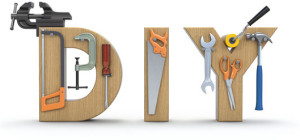 Today, when the competition in any industry is quite high, having a business website doesn’t mean you can get clients online. For that, you need to care that your website design be easy-to-use and highly responsive in other words it should deliver the best customers’ experience. For that UX design response for.
Today, when the competition in any industry is quite high, having a business website doesn’t mean you can get clients online. For that, you need to care that your website design be easy-to-use and highly responsive in other words it should deliver the best customers’ experience. For that UX design response for.
But when your website design is outdated, non-usable or not conversational you lose your potential clients every minute. Besides, according to Forrester’s research, a handy UX design can increase your conversion rate by up to 400%. That means that investment in your website redesign is really worth it.
In a nutshell, a website redesign is a process of its redevelopment with a purpose to make it trendy, usable, conversational and highlighting your brand identity.
User interface redesign is often confused with rebranding. While updating UI can certainly be instrumental in creating a new brand identity, these two terms are not interchangeable. Rebranding is a marketing tool aimed at changing how the brand is perceived by the outside world. It usually involves imagery, logo, name, and even voice redesign.
Hence, let’s move ahead and discover what steps in your redesign process you need to follow to succeed.
Steps of the Redesign Process
Phase 1: Analyze Your Website and Competitors, Set Goals and Document Everything
In a nutshell, the redesign process contains the main steps of UX design development but with some changes. Firstly, you need to start by making an audit on your current UX. Consider what problems with the design or caused by it your current website has. For that, track your website visits and metrics, and study what might be annoying or distracting for them in the web design. Check such metrics as time on site, bounce rate, conversational interactions, conversion rate, etc.
Study the competitors and market and general design trends to avoid your website’s outdated look.
Don’t forget to include your brand identity or positioning into your website design. That might be colors, logo, fonts styles, or special symbols, etc.
Set the goals you want to achieve with website redesign like an increasing number of visitors, number of pages per session or conversion rate.
Document all your purposes and current data to compare after the redesign. That can be bounce rate, average time on page, first, second, and third traffic sources, and conversion rate. These documents will help you prioritize your daily or weekly tasks. You can create comprehensive action plan tracking sheets through which you can see if you are achieving the goals that you have set.
Phase 2: Redesign a Content-First Information Architecture
Building of an Information Architecture (IA)
This term refers to organizing your website in the most user-friendly and intuitive way. Instead of developing a flashy but generic design template for your content, concentrate first on the information you’re planning to include. This saves time which otherwise you might have to spend on multiple iterations.
You’re trying to stay true to your mission and goals and ensure the correct hierarchy and consistency for your site. This is best achieved through flawless web design and the most engrossing and useful content.
User Flow and the Customer Journey
A customer journey is the most realistic illustration of all touchpoints with which a user comes in contact when they visit your website. To build an accurate customer journey, you need a persona and a use case. In other words, you need to devise a problem to solve or a task to complete. That problem might be finding something on your site, and the task might be purchasing a particular product.
Finishing a task will often require the completion of several smaller ones. It is the relationship between these tasks that creates the flow or journey which each of your visitors will undertake.
Redesign of Your Sitemap
A sitemap is a layout of how someone would navigate your new and improved website. A list of all of its pages would be included, and their relationships to each other. A sitemap is a way of organizing your site. It also helps search engine crawlers find pages not accessible through links on other web pages. Developing an intuitive sitemap is one of the most critical things that you can do when you’re focusing on UX design.
Sitemap elements are the content categories you’ve identified while mapping your customer journeys. All sitemap items should be organized in a hierarchical way. Linking them to the right content can provide information about the relationships that you require.
Phase 3: Create Revised Prototypes and Wireframes, and Test Them
After creating a sitemap, designers begin building wireframes or rebuild your current ones. Wireframes are simple blueprints of each page structure and every elements’ location. Any website redesign project timeline will make room for this.
Wireframes should be easily moldable and minimalistic. They are developed with the purpose to arrange all elements in the way to meet the best user experience. Hence, if you see that some design or information elements on your website distract users or are unclear for them, you should think about how to rebuild your design wireframes to integrate all the elements into your design smoothly.
Phase 4: Testing of wiferames
The next important step of the redesign process is testing and it’s critical for success. Here you need potential users to help you evaluate your product. Designers use a range of methods to observe reactions of a target audience, receive feedback, and act on it. These techniques include card sorting, exploration, eye tracking, interviews, guerilla testing, and more.
You can test manually by meeting with users and writing down the insights that they provide. You can also do remote testing via online platforms that connect you with your potential audience. In both cases, you’re providing individuals with your wireframes. The more skillfully-written content you include, the better the feedback quality that you will get.
Phase 5: Introduce the UI, Test Again and Launch the Redesigned Website
After testing your design and getting the first feedback you can get points on which you can improve the design further. After that, your wireframe can transform into a full-fledged user interface and test it again.
Just a quick recap for you, UI combines information architecture with visual design. Creating a sitemap and wireframes are the first steps to introducing a user interface.
Well, when all the tests like desktop and mobile website versions have concluded and all bugs that could be found are exterminated, it is time for the relaunch. Launching a redesigned website can have a more significant impact than the original website launch in some cases. Your customer will open a familiar link. Suddenly, they’ll see a completely different interface with which they will have to engage.
Use Checklists
It’s easy to let something slip your mind when working on a project as complicated as a full website redesign. Make sure that you’ve followed all recommendations and tasks through to their logical conclusion. That means addressing all accessibility, usability like web design responsiveness, and SEO points. One of the many online web design checklists that are out there can help you.
The Soft Launch
Releasing a new version of your site to a limited number of users will help you make improvements based on feedback. That way, you can easily control even the smallest changes. Tell your audience you’re still working on an update. Encourage them to provide their opinions. You can even allow users to roll back to the previous version if they’re experiencing too much difficulty. A large number of rollbacks will be your signal of any major problems.
Onboarding
You should communicate that the redesign has been long-awaited and anticipated by both you and the customers. Guide users through each change and clearly state the benefits. Help them finish their first task with new user flow, but allow them to roam freely and explore the redesign alone as well.
At this stage, you will most likely discover problems that weren’t apparent during previous testing sessions. In some cases, they might significantly damage the customer experience, leaving your audience unsatisfied. This means you’ll have to temporarily roll back to the old design. However, the more feedback you get, the likelier it is that when you take the new site out of beta, it will accomplish everything that you want it to do.
Now, you should understand the reasons for a website redesign, and the logical steps to go through to get your site to where it needs to be. If you need to company for a website redesign, make sure that you get one that has the staff who can accurately assess what your site is lacking and fix whatever problems are slowing your progress.






![Understanding Colors in Graphic Design [Infographic]](https://lerablog.org/wp-content/plugins/wp-thumbie/timthumb.php?src=http://lerablog.org/wp-content/uploads/2013/06/beautiful-book-wallpaper-1024x640.jpg&w=300&h=140&zc=1)
